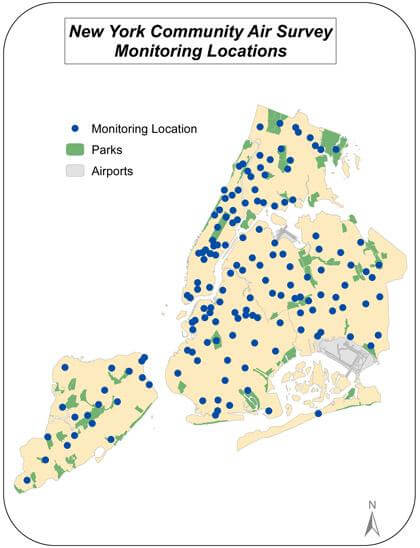By Anna Gustafson
Findings from a community air survey launched this winter by Queens College and the city Health Department could prompt legislation to mitigate traffic congestion and provide important data about air pollution in neighborhoods throughout Queens and the city, officials involved in the study said.
“The city could use the study to say they may want to do something to reduce the traffic burden,” said Holger M. Eisl, a research associate professor at Queens College’s School of Earth and Environmental Sciences Center for the Biology of Natural Systems and one of the study’s collaborators. “Or we may tweak out of the data that you get lower pollution levels on streets where there are lots of trees, so there may be an effort do a more greening of the city.”
City and college officials began the air survey in December in an effort to measure street−level air pollution and distinguish how air quality differs between neighborhoods, and the first phase of the study will conclude at the end of March. Air pollution monitors were mounted on 150 light and utility poles, with at least one monitor in each community district.
The data collected will help the city better understand how pollution from traffic, buildings and other sources affects air quality from one neighborhood to another, according to Thomas Matte, director of environmental research at the Health Department.
“Air pollution aggravates asthma, other breathing problems and heart disease,” Matte said. “Motor vehicles are major sources of dangerous pollution, and this study will allow us to track pollution for the first time at the street level, where New Yorkers breathe. We’ve learned that good data are essential to improving public health.”
Matte spoke about the study to Borough President Helen Marshall and community board district managers at a Queens Borough Cabinet meeting last week.
“Queens has two of this country’s major airports, and for a long time we’ve wanted to know how that impacts pollution in our community,” Marshall told Matte.
Several air monitors have been placed near LaGuardia and JFK airports, Matte said.
Andy Darrell, vice president of the Environmental Defense Fund, said the study could go a long way in addressing health problems that have long plagued New Yorkers.
“Science is clear that traffic pollution is linked to asthma attacks and heart disease,” Darrell said. “Some research suggests that long−term exposure might affect children’s cognitive development. With this study, New Yorkers will get a clearer picture of pollution levels across neighborhoods and boroughs.”
One in eight New Yorkers is diagnosed with asthma during his or her lifetime, and children in the city are twice as likely to need hospitalization for breathing problems as the national average, according to Environmental Defense Fund statistics.
The study will conclude in December 2009, and study results will be available beginning in late 2009.
Reach reporter Anna Gustafson by e−mail at agustafson@timesledger.com or by phone at 718−229−0300, Ext. 174.

































